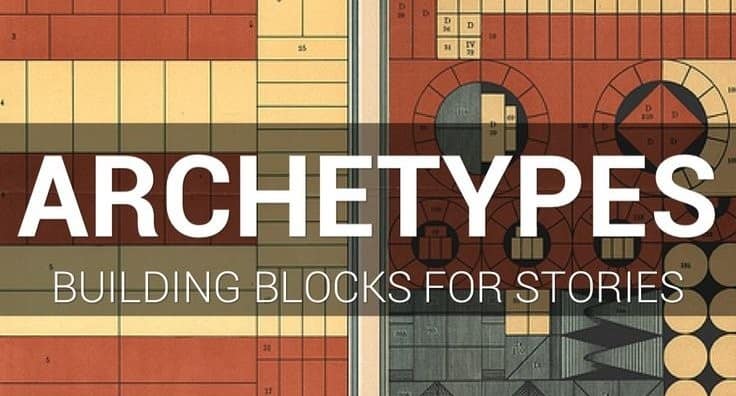
Using Jungian Archetypes to Market Your Financial Brand
In simplest terms, archetypes are the typical character personalities we see in literature and art across different cultures and generations. Because of their prevalence and universality, people can easily identify and relate to different archetypes even if they’re not conscious of it.
Marketers have also come to recognize the power that archetypes can have over people’s psyches and emotions, and use them to develop their branding and storytelling efforts.
While the idea of archetypes has been around for quite a long time, the famous Swiss psychiatrist proposed to define individual archetypes in more detail in the early 20th century.
He describes archetypal events like birth, marriage, and death; archetypal themes such as the apocalypse, the deluge, and creation; as well as archetypal figures such as the wise old man, the persona, the shadow, the animus, the great mother, and the child, among many others.
Modern marketers have since embraced the concept of the Jungian archetype and have developed more specific interpretations for each archetypal figure.
Let’s take a quick look at the 12 brand archetypes most marketers use and how they’re typically defined.
The Innocent, also known as the orphan
Idealistic, pure, straight dealing, optimistic, kind and simple.
The Hero
Strong, fierce, relentless, disciplined.
The Everyman
Real, honest, hardworking, fair.
The Caregiver
Kind, generous, comforting; someone who serves.
The Jester
Spontaneous, fun, playful, and sometimes inappropriate.
The Explorer
Freedom, self-improvement, discovery, daring, self-sufficiency.
The Outlaw / Rebel
Breaks molds and conventions; disrupt and rebuild.
The Magician
Change-makers who cause us to shift our perspective, grandiose. Magicians are also logical, insightful, and analytical.
The Lover
Oriented towards the senses, deep connections and lasting relationships.
The Creator
Creative, driven, open-minded, determined.
The Ruler
Authoritative, in control, responsible; always seeking improvement.
The Sage
Knowledgeable, objective, research orientated.
How do Jungian Archetypes Benefit Financial Websites and Brands?
Current models of financial branding are not as rigid as they once were. Traditional financial institutions and brands frequently identified with the sage or ruler archetypes.
However, times are changing, and the market is moving towards individualism and demand is shifting to more personalized products and services that speak to people’s values. Many have also developed negative feelings towards the finance and banking sector, and no longer see them as trustworthy.
But if you drop the image of the old and stuffy financial institution, and adopt a fresh and innovative brand identity, you can carve out your own niche and disrupt the market. You can do this by choosing one or two archetypes to guide your storytelling and branding strategy.
However, you can’t just pick an archetype out of a hat. You first have to identify your ideal customer and find the archetypes that will resonate with them.
Understanding Your Customer Demographics
Banks and financial services companies tend to play it safe when it comes to their branding in order to appeal to everyone and not offend anyone. But if you’re just starting out and trying to quickly grow your client base, you have to catch people’s attention by speaking their language and appealing to their values.
Look in your own backyard first and check out your local market. Start out with a market that’s already familiar to you because you’ll have a better understanding of people’s sensibilities. Find out what people’s pain points are and how you can address them. Try to define your ideal client and find out what makes them tick. This is important information that will not only help you during the brainstorming phase, but also through the entire lifetime of your brand marketing campaign.
Effectively Using Jungian Archetypes for Brand Management
Once you’ve settled on which archetypes to use for your brand, you can begin developing your branding and marketing strategy. Your ultimate goal is to make your brand’s personality shine through your visual identity and messaging.
Your logo is going to be the face of your brand, so its design should be aligned with the brand archetype you’re trying to portray. You also have to be very selective about the images you use for your website and marketing collateral. As the old saying goes, a picture is worth a thousand words. Your brand’s visual narrative is what will make the most impact and evoke the strongest emotions amongst your target audience.
The psychological effect of colors can also play a big role in portraying the right image for your brand and evoking the right emotions from your audience. Red, for example, is often associated with love and excitement and is more appropriate for the lover and hero archetypes. Blue represents calmness and wisdom, and is better suited for the sage archetype.
When it comes to your copywriting and messaging, your chosen archetypes will guide you in finding a narrative hook that will help tell your brand’s story. Use language that people can easily associate with the personality and image you’re trying to convey. Remember to be consistent with your word choice to make your story telling more effective.
Final Thoughts
Financial websites are getting a lot livelier. If you want to stand out, consider looking at where your brand might go via archetypes.
Imagine how much more interesting and exciting your website could become. And use these archetypes to help attract the ideal customers looking for your product or service and style.
Learn How AltaStreet has helped well over 1,000 Firms thrive in the Financial Space. Contact Managing Partner, Dan Stark to set up a Discovery Call or email: dan@altastreet.com.